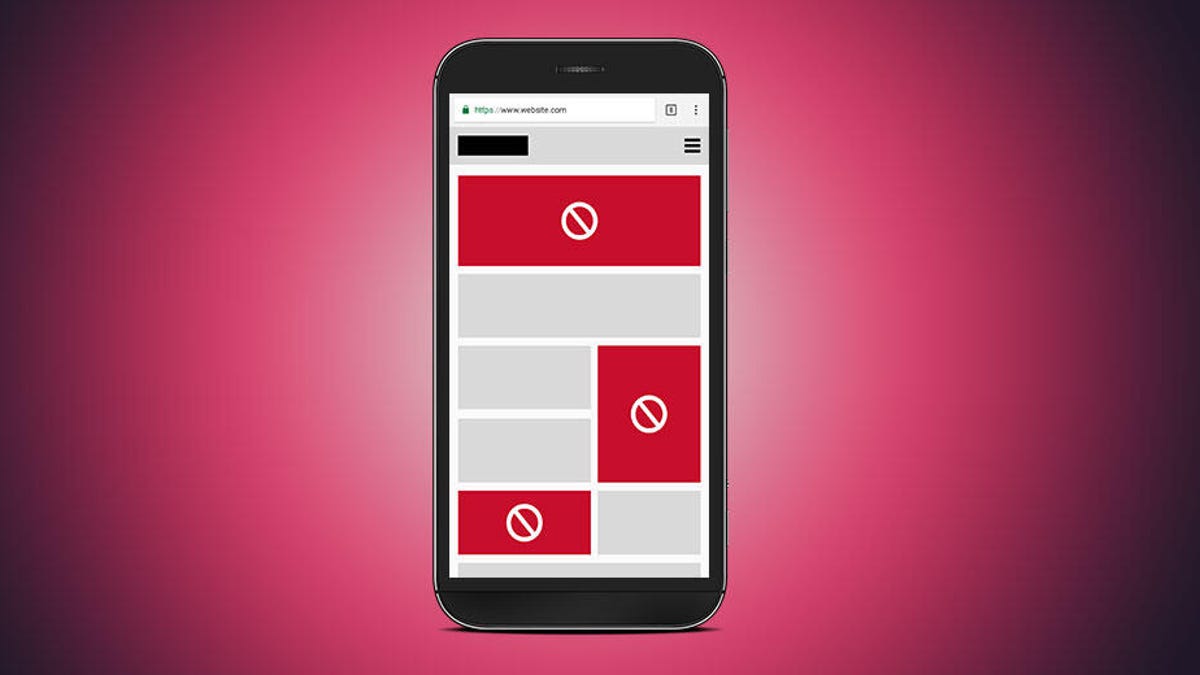Ad blocking takes off on mobile phones, a challenge for publishers
About 15% to 30% of website traffic is from people with ad-blocking software, online ad firm Blockthrough reports.

Eyeo's Adblock Plus, the most widely used ad blocker on PCs, now offers an ad-blocking web browser for Android.
The number of people using ad-blocking technology on mobile browsers has surged to 527 million, an increase of 64% over the last three years, according to a report published Thursday. Combined with ad blocking on personal computers, that means a total of 763 million devices were running ad blockers in the fourth quarter of 2019, the report said.
That means about 15% to 30% of website traffic is using an ad blocker, said Marty Kratky-Katz, chief executive of Blockthrough, a Toronto-based company that helps publishers try to cope with ad blocking.
Mobile ad blocking is rising, a report from ad firm Blockthrough finds.
"Although desktop ad blocking has peaked, mobile adoption is growing rapidly," Kratky-Katz said in the report. One reason PC ad blocking is now waning is that people in North America, Europe and China simply don't use PCs as much these days for browsing, the company said.
Just because somebody is using an ad blocker doesn't mean they'll necessarily have all their ads blocked on the web, though. The top-used browser extension, Eyeo's Adblock Plus, by default doesn't block ads that meet its Acceptable Ads standard for less intrusive ads, though big publishers must pay to not be blocked. Blockthrough's business also involves helping publishers show that type of ad to people with ad blockers installed.
Ad blocking is a big deal for publishers that have relied on ads to support their operations. Ads have enabled the growth of services with immensely broad appeal, like Google search and Facebook social networking.
But ads have downsides, and websites choked with distracting ads -- often the reason people install ad blockers -- are only one. Ads can also slow websites down, tax your phone battery and eat through your monthly network data plan faster. On top of that, there's a growing realization that ads can be used to track you online, a potential privacy problem. And while the Acceptable Ads policies can cut down on the distraction, they don't address the tracking.
Ad blocking can be a competitive advantage. Google doesn't permit extensions on its Android version of Chrome the way it does for PCs, so people who want to block ads have to download other browsers like Alibaba Group's UC Browser. Brave, maker of the Brave browser, points to performance improvements and lower memory usage from blocking ads. And Mozilla is building in extensions support to its new Android browser, code-named Fenix. Early builds now support one widely used ad blocker, uBlock Origin.
There are efforts to sidestep today's ad problems. For example, startup Scroll cuts out ads and most tracking at some news sites if you pay $5 a month for a subscription. And Brave is trying to build an alternative privacy-first ad system even as its browser blocks ordinary ads by default.
This is the sixth annual ad-blocking report. It's been conducted by PageFair, a company Blockthrough acquired in 2018. The study is based chiefly on measurements of ad blocker software's downloads of the Eyeo-maintained EasyList set of ad-related internet domains.
However, the next PageFair report likely will be modernized to be more accurate.
"Many ad blockers today no longer rely on EasyList, or download EasyList from somewhere other than Eyeo's repository," Kratky-Katz said. Three years ago, the list's use accounted for more than 90% of ad-blocking activity, but the company will try to uncover other ad-blocking activity for its next report, he said.
Originally published Feb. 6, 5 a.m. PT.
Update, 9:29 a.m.: Adds details about ad-blocking competition and Blockthrough's effort to improve its study methodology.

